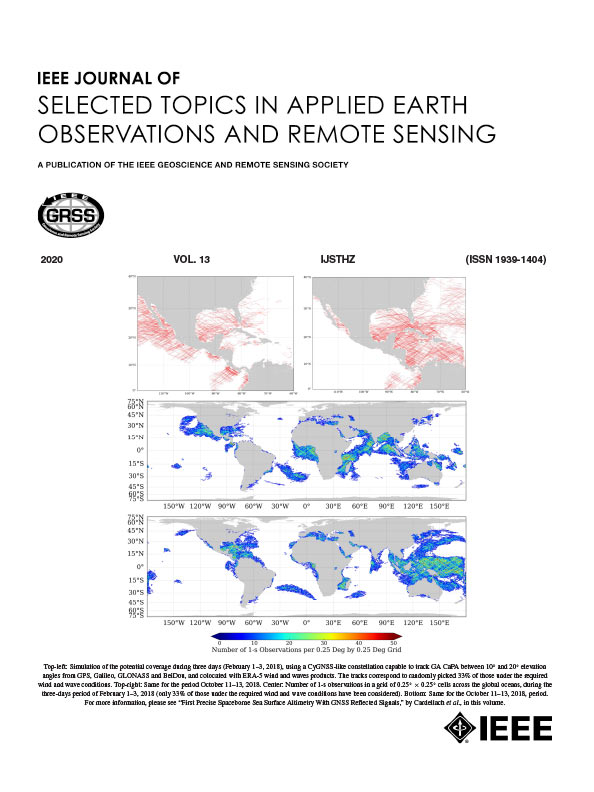Mapping Antarctic Blue Ice Areas With Sentinel-2A/B Images and LightGBM Model
IF 4.7
2区 地球科学
Q1 ENGINEERING, ELECTRICAL & ELECTRONIC
IEEE Journal of Selected Topics in Applied Earth Observations and Remote Sensing
Pub Date : 2025-04-15
DOI:10.1109/JSTARS.2025.3560280
引用次数: 0
Abstract
Antarctic blue ice plays a crucial role in surface energy balance and paleoclimate research. A high-accuracy and comprehensive dataset of blue ice areas (BIAs) is essential for understanding climate dynamics and environmental changes in the region. While satellite remote sensing is effective in mapping BIAs, traditional methods rely on limited spectral bands and linear models with inherent limitations. This study integrated remote sensing techniques with ensemble learning algorithms to develop a high-resolution (10 m) Antarctic-wide BIA dataset using Sentinel-2 imagery based on the years 2017–2022. Random forest, XGBoost, and LightGBM integrated learning algorithms were used to model the extraction of Antarctic blue ice. The accuracy of the model was evaluated by confusion matrix with LightGBM achieving the highest overall accuracy (87.23%). We also used SHapley Additive exPlanations values to improve the interpretability of opaque system models by evaluating the contribution of each feature variable. Validation through visual interpretation of Sentinel-2A/B images further confirmed the model's reliability, with an accuracy of 90.61%. Based on these robust results, we generated detailed BIAs across Antarctica. Our findings estimate the total BIAs at 175 274 km2, covering approximately 1.25% of the continent. The blue ice is mainly concentrated in low-elevation coastal areas and mountain slopes, especially in Dronning Maud Land, Amery Ice Shelf, Wilkes Land, Victoria Land, and Transantarctic Mountains. We further reveal that most of the blue ice is located at elevations below 500 m, with air temperatures between −5 and 0 °C, and ice velocity under 100 m/yr. Our high-resolution dataset provides crucial insights for future research in Antarctic glaciology, paleoclimate studies, and meteorite collection.利用Sentinel-2A/B图像和LightGBM模型绘制南极蓝冰区域
南极蓝冰在地表能量平衡和古气候研究中起着至关重要的作用。高精度、全面的蓝冰区数据对于了解该地区的气候动态和环境变化至关重要。虽然卫星遥感是有效的BIAs制图方法,但传统方法依赖于有限的光谱带和线性模型,具有固有的局限性。本研究将遥感技术与集成学习算法相结合,利用2017-2022年的Sentinel-2图像开发了一个高分辨率(10米)南极洲范围的BIA数据集。采用随机森林、XGBoost和LightGBM综合学习算法对南极蓝冰的提取进行建模。通过混淆矩阵评价模型的准确性,其中LightGBM总体准确率最高(87.23%)。我们还使用SHapley加性解释值通过评估每个特征变量的贡献来提高不透明系统模型的可解释性。通过Sentinel-2A/B图像的目视解译验证,进一步证实了模型的可靠性,准确率为90.61%。基于这些可靠的结果,我们生成了整个南极洲的详细偏差。我们的研究结果估计总偏倚为175 274 km2,覆盖约1.25%的大陆。蓝冰主要集中在低海拔沿海地区和山坡上,特别是在Dronning Maud Land、Amery冰架、Wilkes Land、Victoria Land和横贯南极山脉。我们进一步发现,大部分蓝冰位于海拔500米以下,气温在- 5到0°C之间,冰速低于100米/年。我们的高分辨率数据集为南极冰川学、古气候研究和陨石收集的未来研究提供了重要的见解。
本文章由计算机程序翻译,如有差异,请以英文原文为准。
求助全文
约1分钟内获得全文
求助全文
来源期刊
CiteScore
9.30
自引率
10.90%
发文量
563
审稿时长
4.7 months
期刊介绍:
The IEEE Journal of Selected Topics in Applied Earth Observations and Remote Sensing addresses the growing field of applications in Earth observations and remote sensing, and also provides a venue for the rapidly expanding special issues that are being sponsored by the IEEE Geosciences and Remote Sensing Society. The journal draws upon the experience of the highly successful “IEEE Transactions on Geoscience and Remote Sensing” and provide a complementary medium for the wide range of topics in applied earth observations. The ‘Applications’ areas encompasses the societal benefit areas of the Global Earth Observations Systems of Systems (GEOSS) program. Through deliberations over two years, ministers from 50 countries agreed to identify nine areas where Earth observation could positively impact the quality of life and health of their respective countries. Some of these are areas not traditionally addressed in the IEEE context. These include biodiversity, health and climate. Yet it is the skill sets of IEEE members, in areas such as observations, communications, computers, signal processing, standards and ocean engineering, that form the technical underpinnings of GEOSS. Thus, the Journal attracts a broad range of interests that serves both present members in new ways and expands the IEEE visibility into new areas.

 求助内容:
求助内容: 应助结果提醒方式:
应助结果提醒方式:


